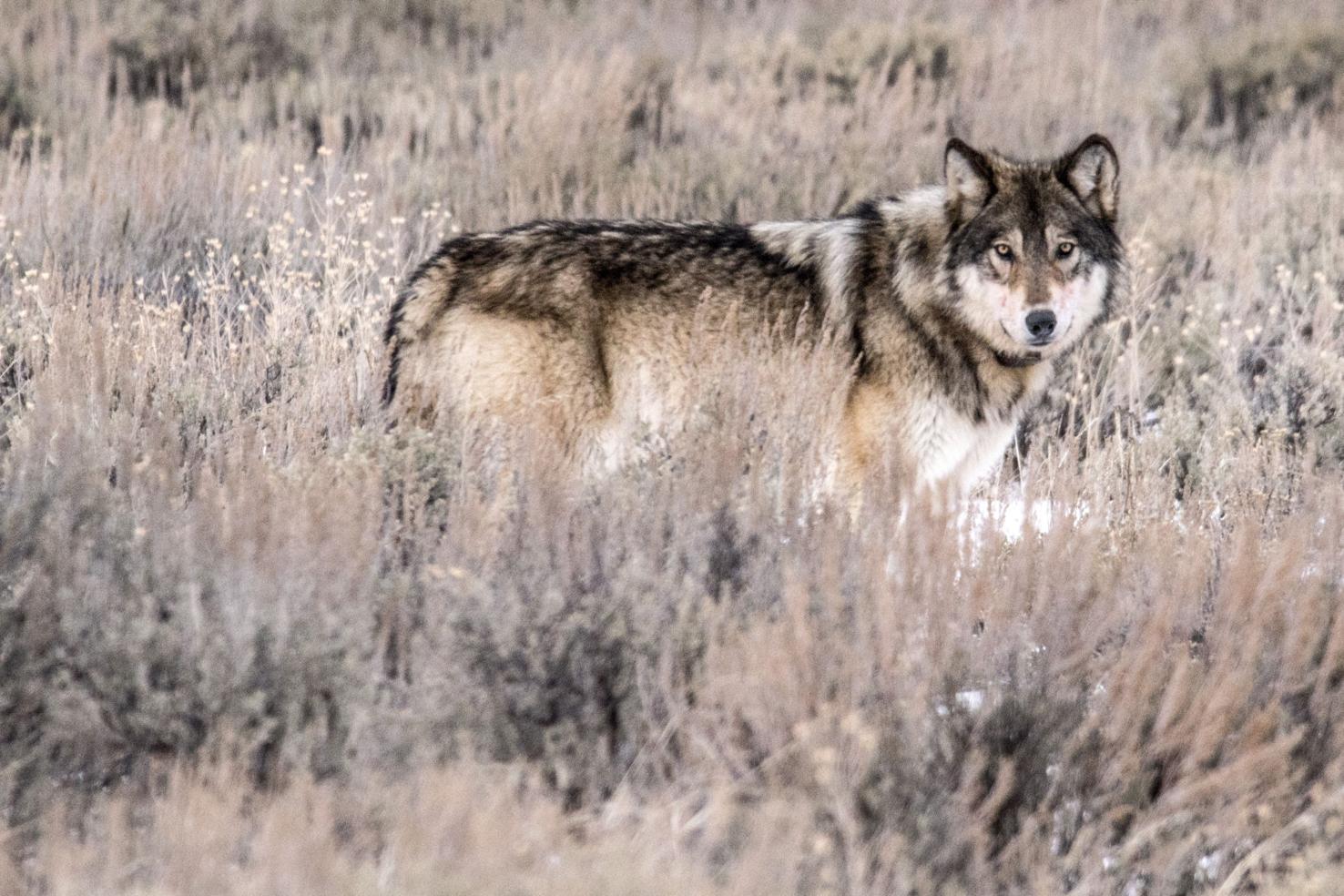Local activists join the call for wolf protections
 A gray wolf pauses while traveling across the sagebrush flats in Grand Teton National Park in this 2018 photo. Two Jackson-based groups — Wyoming Untrapped and Wyoming Wildlife Advocates — have signed a petition asking the U.S. Fish and Wildlife Service to restore protections for wolves in the western United States.
A gray wolf pauses while traveling across the sagebrush flats in Grand Teton National Park in this 2018 photo. Two Jackson-based groups — Wyoming Untrapped and Wyoming Wildlife Advocates — have signed a petition asking the U.S. Fish and Wildlife Service to restore protections for wolves in the western United States.
Two environmental advocacy groups with Jackson Hole roots have signed a petition that asks federal wildlife managers to restore Endangered Species Act protection for wolves in the western United States.
The petition, circulated Thursday, follows the passage of new laws in Idaho and Montana that go over wildlife managers’ heads to demand more aggressive hunting seasons and population reductions. While Wyoming’s wolf management program hasn’t attracted the same attention recently, the state’s emphasis on keeping wolves out of most areas is part of what prompted Wyoming Wildlife Advocates to support the petition, Executive Director Kristin Combs said.
“To have such a small number of wolves in the tiny, northwest corner of the state leaves out a lot of other areas where they could be beneficial to ecosystems and the economy,” Combs said. “Idaho and Montana are just trying to be like Wyoming, because Wyoming out of the gate said, ‘We’re just going to keep numbers as low as we can.’”
In 85% of Wyoming, wolves are classified as a “predator” species that can be killed at any time, by any means and without limit. The southern boundary of the predator area for much of the year is Highway 22, running right through Teton County.
Wyoming Untrapped is the second Jackson-based nongovernmental organization to join the petition. Loren Taylor, the group’s executive director, said in a statement that wolves throughout the Northern Rockies are in “jeopardy,” due to Wyoming and now Montana and Idaho’s policies. All three states are pursuing population goals that are predicated on the minimum number of wolves required when the species was “delisted,” and removed as a federally threatened species.
“These minimum numbers were not intended to be the long-term population goals for wolves, but rather the minimum numbers necessary to prevent wolf populations from requiring Endangered Species Act protections,” Taylor said. “Intentionally suppressing the wolf population in this way undermines the decades of work, funding, and ecosystem recovery implemented by countless agencies, researchers, NGOs and private citizens.”
Of the three northern Rockies states, Wyoming has the least number of wolves. The native large canines were extirpated from the region early in the 20th century, but then were reintroduced into Yellowstone National Park and central Idaho’s wilderness complex in the mid 1990s.
The Montana Department of Fish, Wildlife and Parks estimates between 900 and 950 wolves in its jurisdiction. The Idaho Department of Fish and Game has estimated about 1,500 in the Gem State in the last couple of years.
The Wyoming Game and Fish Department, meanwhile, estimated a minimum of 327 wolves statewide at the beginning of 2021.
Those totals are all well above delisting requirements of 15 breeding pairs and 150 wolves in each state.
Nevertheless, a coalition of 70 conservation, Indigenous, and animal welfare groups were dissatisfied enough with the state of northern Rockies wolf management that they asked the U.S. Fish and Wildlife Service to take another look at the species’ viability. The agency has 90 days, under its procedures, to determine whether the petition contains enough information to justify a potential listing under the Endangered Species Act.
In May Idaho Republican Gov. Brad Little signed a measure lawmakers said could lead to killing 90% of the state’s 1,500 wolves through expanded trapping and hunting. It took effect July 1.
Wildlife authorities in Montana, following new laws, have been looking at changes such as increasing the number of wolves an individual can hunt to between five and 10. A decision is expected in August.
The petition also seeks to protect wolves in Utah, Oregon, Washington, Colorado, California, Nevada and northern Arizona.
— The Associated Press contributed to this story.
Contact Mike Koshmrl at 732-7067 or env@jhnewsandguide.com.


